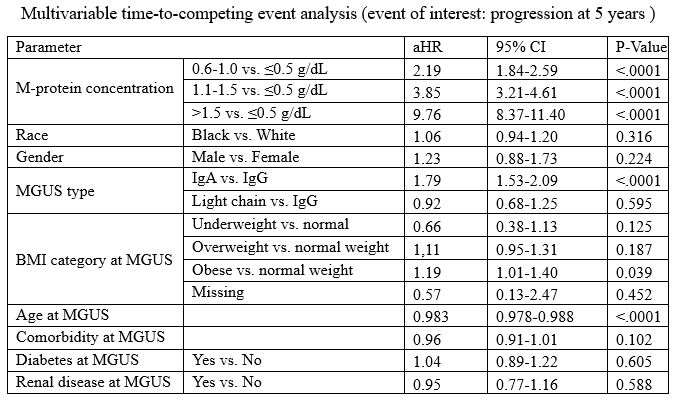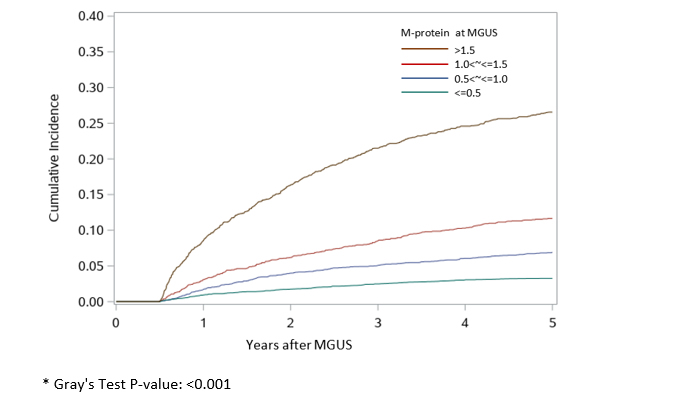LOUIS—Historically, patients with monoclonal gammopathy of undetermined significance (MGUS) have been thought to have a less than 1% chance of progressing to multiple myeloma as long as their M-protein levels are below 1.5 g/dL. A new study presented at the 65th American Society of Hematology Annual Meeting on December 9, 2023 challenges that assumption.1
Existing risk models were based on serum samples from a predominately white patient population, causing the study investigators to investigate whether those models applied as broadly as has been assumed. Researchers at the St. Louis VAMC examined data from the VHA system to determine whether the established cut-off for low-risk of progression held for a more diverse population with MGUS.
They identified 15,520 veterans diagnosed with MGUS between 1999 and 2021 and followed them until progression to multiple myeloma, death or data end date of July 11, 2023. The team stratified the cases by M-protein concentration ≤0.5, >0.5-≤1.0, >1.0-≤1.5, >1.5 g/dL and then plotted the cumulative incidence function curve. The hazard model assessed progression at five years, with death a competing event.
The veterans had a mean age at diagnosis of 71.1 years and more than four out of five had the IgG subtype. Nearly 20% had renal disease and 39.5% had diabetes. Black veterans accounted for 36.1% of the cohort.

Salehi M, Wang M, Sanfilippo KM, Thomas T, Schoen MW, Chang SH. Monoclonal Protein Concentration and Risk of Multiple Myeloma: Is 0.5 g/DL the New 1.5? Abstract 2040. ASH 2023. Dec. 9, 2023.

Salehi M, Wang M, Sanfilippo KM, Thomas T, Schoen MW, Chang SH. Monoclonal Protein Concentration and Risk of Multiple Myeloma: Is 0.5 g/DL the New 1.5? Abstract 2040. ASH 2023. Dec. 9, 2023.
At the five year mark, 26.6% of the veterans with M-protein concentration greater than 1.5 g/dL had progressed to multiple myeloma, as had 11.7% of those in the 1.1 to 1.5 g/dL range and 6.9% of those with M-protein levels of 0.6 to 1.0 g/dL. Among those with the lowest concentration, less than 0.5 g/dL, 3.3% had progressed.
Multivariable analysis showed that an M-protein greater than 1.5 g/dL increased the risk of progression nearly 10-fold compared to levels of 0.5 g/dL or less (aHR 9.76, 95% Confidence Interval [CI] 8.37-11.40).
Based on this study, only m-protein values below 0.5 g/dL would indicate a less than 1% risk of developing multiple myeloma over five years. In contrast, the patients with a concentration above 1.5 g/dL have a greater than 26% risk of progression during that period. For those with concentrations below 1.5 but above 1.1, the risk was an order of magnitude greater than would have been assumed using existing risk models.
It may be time to reassess the model and substantially reduce the threshold for low-risk of progression. “Risk of multiple myeloma in patients clinically evaluated for MGUS may be higher than previously thought and new models of MM progression should be developed,” the researchers concluded.
1Salehi M, Wang M, Sanfilippo KM, Thomas T, Schoen MW, Chang SH. Monoclonal Protein Concentration and Risk of Multiple Myeloma: Is 0.5 g/DL the New 1.5? Abstract 2040. ASH 2023. Dec. 9, 2023.

